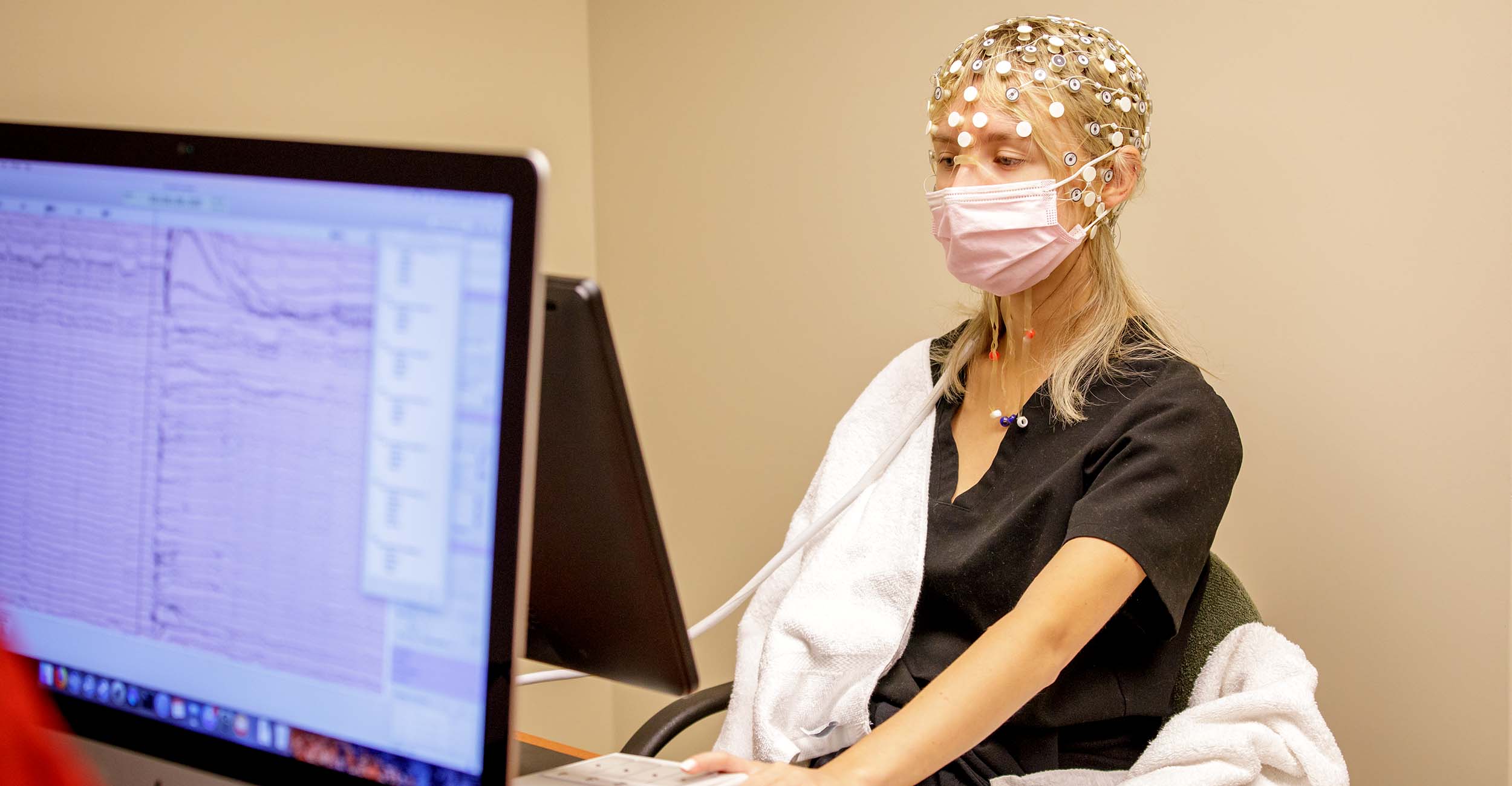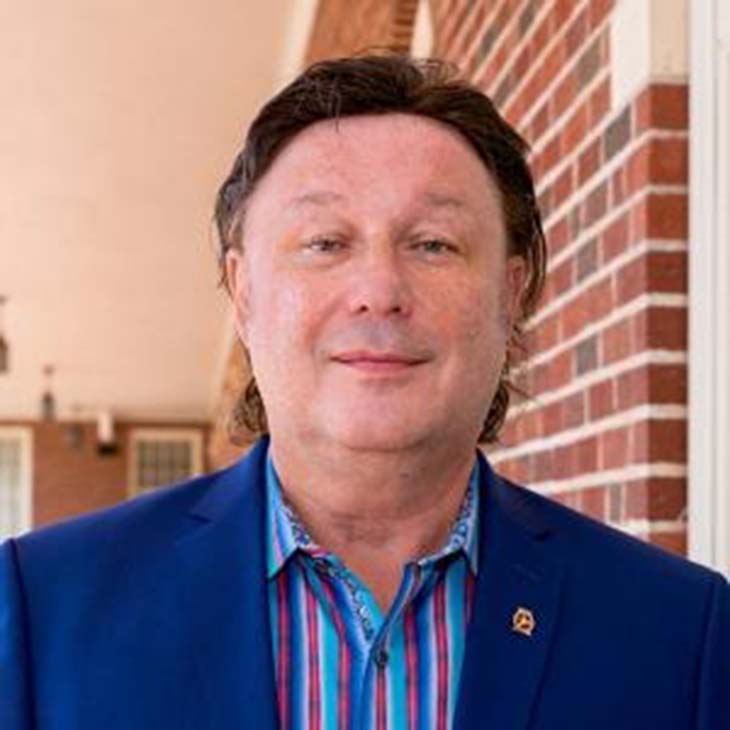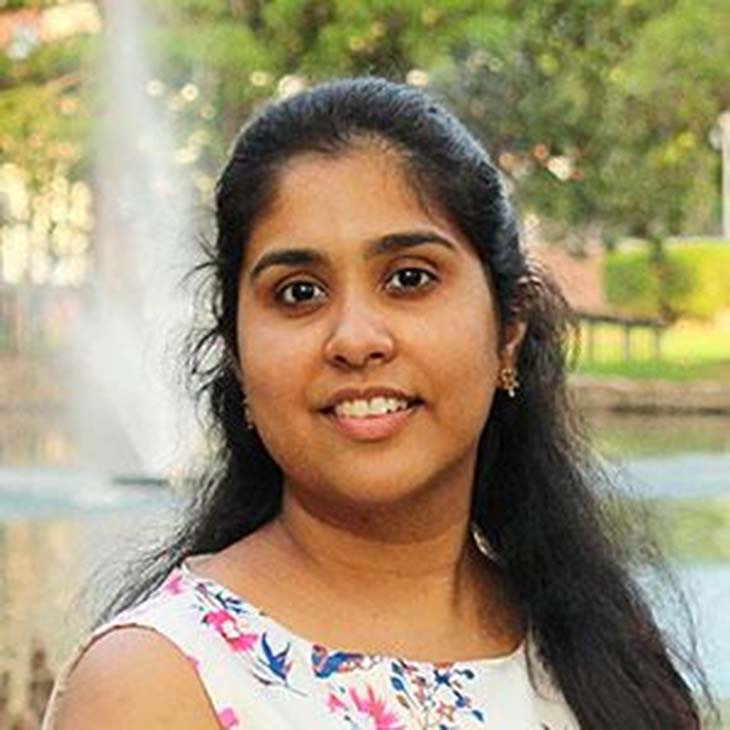
Research hopes to find new ways for people to communicate and control their differences and disorders
Tuesday, November 2, 2021
Media Contact: Jordan Bishop | Communications Specialist | 405-744-9782 | jordan.bishop@okstate.edu
For children beyond the age of 6 or 7, there is no known cure for stuttering, but it doesn’t mean you can’t control it and live a normal life.
For decades, many didn’t know they could learn to live with their stuttering, but with more and more research, speech-language pathologists and researchers are finding how to help people succeed and have spread the word that it’s never too late to seek help.
It was the same old story for decades around the world, but a shift in culture, as well as more prominence surrounding disorders like stuttering, have given those struggling hope.
Dr. John Tetnowski, an Oklahoma State University professor in the Department of Communication Sciences and Disorders (CDIS), is hoping research can continue to make a difference in people’s lives.
Stuttering has moved to the forefront in society over the years. The Academy Award for Best Picture went to 2010’s The King’s Speech, which tells the story of King George VI’s battle to control his stammering.
President Joe Biden has discussed in length his stuttering and has been an advocate for everyone who shares his condition.
Tetnowski said because of the publicity surrounding both The King’s Speech and Biden that more and more people have started to seek help. As a result, researchers have also had more data to work with in determining how to further help people control their condition, whether it be stuttering or other fluency differences.
Even Biden has had to fight the enduring stigma that those who stutter are of below-average intelligence when that is simply not the case, Tetnowski said.
“I think it is helping that the community of speech-language pathologists who work in the field of stuttering that we can assure children who stutter and say, ‘You can be anything you want to be, including the president of the United States,’” Tetnowski said. “That is really quite powerful to be able to say that and give children hope for their future.
“At the same time, you can see some of the bullying and teasing that kids go through when they stutter. The comments that are made about him being called ‘Slow Joe’ and things like that — they think of him as being intellectually inferior, not as smart. The only thing that he is doing is controlling his speech.”
Although the stigma might never truly be gone, the fact that more and more people are seeking help is promising, Tetnowski said.
OSU is doing its part with Tetnowski’s research lab for stuttering and has established an OSU chapter of the National Stuttering Association for people who stutter, the Oklahoma Affiliates for the Knowledge of Stuttering for speech-language pathologists interested in specializing in stuttering and a Cowboy Stuttering Camp to treat school-age children who stutter.

“The kids who attend the Cowboy Stuttering Camp get individual therapy, group therapy, communication training that allows them to become better communicators,” Tetnowski said. “It ends with a celebration where each one of the kids, we go into the auditorium and they make a presentation that they have been working on for the whole camp. It is the first public talk that most have ever done in their whole lives.”
The Cowboy Stuttering Camp was started this past summer and attracted people from far and wide. In addition to the children’s programming, parents receive training on how to interact and advocate for their children.
“It showed me that people recognize how important it is,” Tetnowski said.
Getting to see kids be able to speak fluently in front of their parents for the first time always brings a smile to his face.
“There are tears that are shed almost every day,” Tetnowski said. “When those kids get up on that stage and do their presentation and get a standing ovation from everyone in the audience, that means a lot. And you do see tears of joy coming down those parents’ faces. One of the things that we tell them and one of the goals of all these programs that we run for them is to make sure that those kids when they grow up will be able to do exactly what they want to do in real life.”
OSU’s research in these areas is part of a national effort to look more into how communications
disorders occur and also looking at ways for learning how to communicate differently.
“I think it is helping that the community of speech-language pathologists who work
in the field of stuttering that we can assure children who stutter and say, ‘You can
be anything you want to be, including the president of the United States.' That is
really quite powerful to be able to say that and give children hope for their future.
One such researcher is Dr. Roha Kaipa, who runs OSU’s Language Learning Lab and has been exploring how adults and children learn multiple languages and the factors that help them retain the learned information.
Kaipa has found children are the best candidates for learning multiple languages since their brains are still forming and can easily wire and rewire (neural plasticity). In a world that is constantly becoming more diverse, knowing different languages will be vital in the coming years.
“Young kids, their brain is so malleable. It is so intricate that it is like a sponge,” Kaipa said. “They can absorb everything they hear. It is better if you start early with them so they can associate the words, like when I say cup in Spanish, and then in English, they can associate it easier. These connections make it faster for them to recall or retrieve their words from their vocabulary. I think parents are always worried about if they can teach an additional language, will they be able to pick it up or will they have a delay. During the early stages, even if they don't learn every single aspect in their first or second language, by school age, both of the languages even out.”

What started as a study to see how quickly children who use one language versus more retain words has grown into a study on how the brain overall recalls information across this population, which Kaipa finds could be helpful in clinical practice.
If Kaipa can find out the best ways for children to use their working memory to retain information, she hopes that it can also work well for adults who can improve their working memory, which was not thought possible for years.
“I need first to see how language is improving and how factors like working memory influence it,” Kaipa said. “There is a pushback from a group of researchers who believe that working memory is limited in individuals, which means you cannot improve it. It has been difficult to establish that working memory can be improved and working memory training can bring about language gains in children with language impairments. I am hoping I can bridge that and examine if factors like working memory can influence language skills.”
Kaipa and Tetnowski are hoping that in the near future, OSU will be able to have a doctoral program. Professors and master’s students are currently doing the research at OSU, but a doctoral program could accomplish even more, they said.
"Students have started to show more interest in research, having a Ph.D. program gives them an option to continue research instead of waiting to become a clinician and then come back," Kaipa said. "Once you leave, it is harder to come back and become a student, and I think there is interest among students to apply for the program."
Tetnowski arrived at OSU in 2020 thanks to a recent endowment bestowed upon CDIS by the Sias family, and he thinks it is going to help the department to get one step closer to start a doctoral program.
He currently is the only board certified fluency specialist in the state, and that has given OSU some prominence that wouldn’t have been possible before.
“I think this type of research is hard to do. It is hard to develop,” Tetnowski said. “In my last position, I have already been the primary mentor for 16 doctoral students. That is a lot. My goal is to bring a doctoral program like that to Oklahoma State — for this to be one of the centers of the nation that is conducting that cutting-edge research as well as conducting applied research that actually helps people.”
